Transponders and Cameras
Throughout the Grand Prix weekend all cars must be fitted with two FOM cameras or camera housings. The cameras are used to provide on-board TV footage.
The cars have a total of six camera mounting points. One camera housing is always mounted on top of the air box immediately behind the driver’s head. The position of the second housing is chosen by the FIA in consultation with the relevant team and driver.
What most don't know is that AMB (who makes the timing system and equipment) has a "special" transponder unique to F1 (as far as I know) that can receive info from the timing loop antenna. Mostly, that data is used for commands for the onboard camera (like scrolling the protective film when blotches appear), it also has the capability to receive info, for instance regarding the flags on that section of track, and that could trigger marshaling lights/indications on the steering wheel.
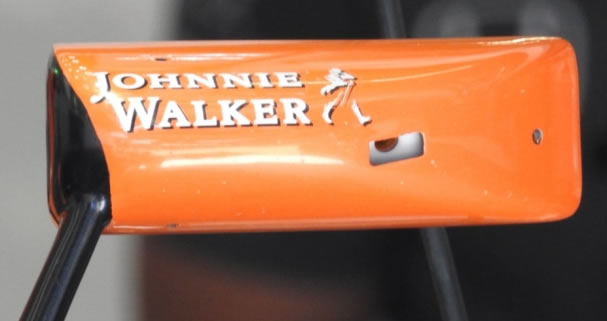
Opening below Johnnie Walker leg is TV camera, and small dot on the outside edge is an infra red camera used to measure front tire temperature around the lap
Recent seasons has seen the FOM nose cameras located in a manner clearly aimed at improving performance of the front wing rather than to deliver effective TV pictures. FIA 2012 season Technical and Sporting Regulations changes prescribe in the new article (20.3.4) a minimum standard for the field of view of any nose mounted camera. A similar minor change is made to the roll hoop camera location to ensure that a clear picture is not sacrificed on the altar of downforce. Because previous rules are not so efective, at the middle of 2013, an updated version of Formula 1's 2014 technical regulations has been issued. Because many teams have exploited the front-mounted FIA camera pods for aerodynamic benefit, often fitting them just behind the middle section of front wing, this practice has now been outlawed by mandating the front cameras to be between 325-525mm above the floor. In this way aero influence between front wing and camera pod has been minimized.
The driver radio is mounted inside the cockpit, and is linked to the earpieces and microphone sewn into the driver’s balaclava. As the pit/driver radio audio is now a key part of Formula One TV coverage, the output from the radio is split and passed to both the FOM camera unit and the aerial for transmission to the team back at the pits.
The feed from the cameras is passed through a conditioning unit before passing into the FOM camera interface unit. This interface also takes feeds from the car’s GPS aerial, the car’s telemetry, external microphones as well as the driver radio. The combined output is then transmitted from an aerial on the front of the car. This allows the TV producers to have the video, audio and data to present on TV screens.
FOM rules prohibit the use of video cameras in the circuit from non-TV rights holders, but there is a dispensation for teams on Friday mornings so they can gather data. If you watch free practice sessions on Fridays at Grands Prix, you can see that sometimes there are a lot more onboard cameras on the cars then FIA prescribe. But they are not all TV cameras, placed there by Formula One Management. The teams can place their own cameras on the cars during practice to show how their latest updates are working. And most of the teams do it. 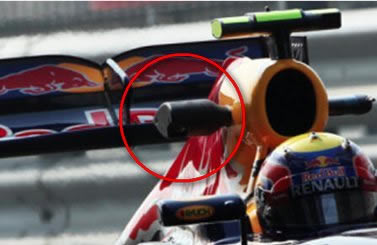 During 2012 season for example, Red Bull used an infrared or thermographic camera, mounted on the right side of the engine cover, which can film the exhaust gas flow as it exits the exhausts and passes down into the diffuser, measuring and observing the Coanda effect. It’s not obvious, it looks like a slightly more bulbous version of the standard FOM camera mounting, but it’s providing vital information on the way the highly sophisticated exhaust blows.
During 2012 season for example, Red Bull used an infrared or thermographic camera, mounted on the right side of the engine cover, which can film the exhaust gas flow as it exits the exhausts and passes down into the diffuser, measuring and observing the Coanda effect. It’s not obvious, it looks like a slightly more bulbous version of the standard FOM camera mounting, but it’s providing vital information on the way the highly sophisticated exhaust blows.
Some teams use a simple GoPro, camera, mounted on the different parts of the bodywork, pointing at the all different aero parts and observing them during free practise. It all goes to show the lengths that teams will go to to fine tune details of their innovations.
Each car has a transponder unit fitted to it, the transponder has a ID unique to each car and it will transmit this ID when the unit is energized by passing over a timing loop buried in the track surface. These transponders allow the timekeepers to record every lap time of every car throughout the weekend. The timing loop is effectively two bits of wire that run across the track and back, something like antenna (actually, it is an antenna). Transponders transmit their code constantly when energized. The signal is relatively weak and requires that the transponder be not higher than a fixed height above the surface, usually not more than appr. 60 cm. Every antenna loop goes to a receiver with a decoder which decodes the unique ID of the transponder and sends it to the timing software on a main computer. As soon as the start is given, the software is activated and when each car passes over the start/finish line loop for the first time starts counting the time till it crosses the sector loops and the start/finish one, the latter giving the total lap time.
There are auxiliary loops on the pit lane to determine when a car enters and leaves pit area and there is a loop now at the first safety car line to track eventual rule transgression for overtaking when safety car leaves the track and race is restarted. Also, safety car has its own transponder and is identified by the system. There are several antenna loops placed around the track which is why you see timing splits comparisons.

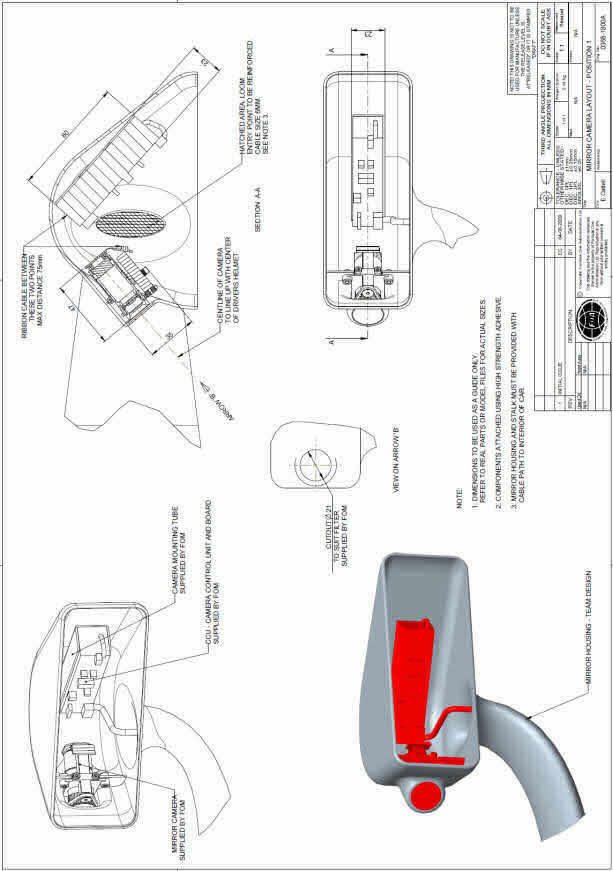
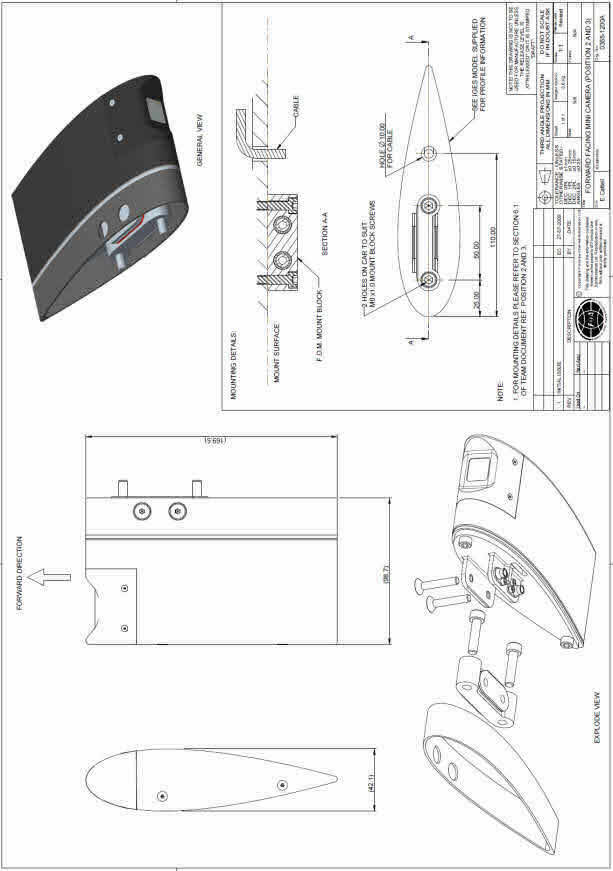


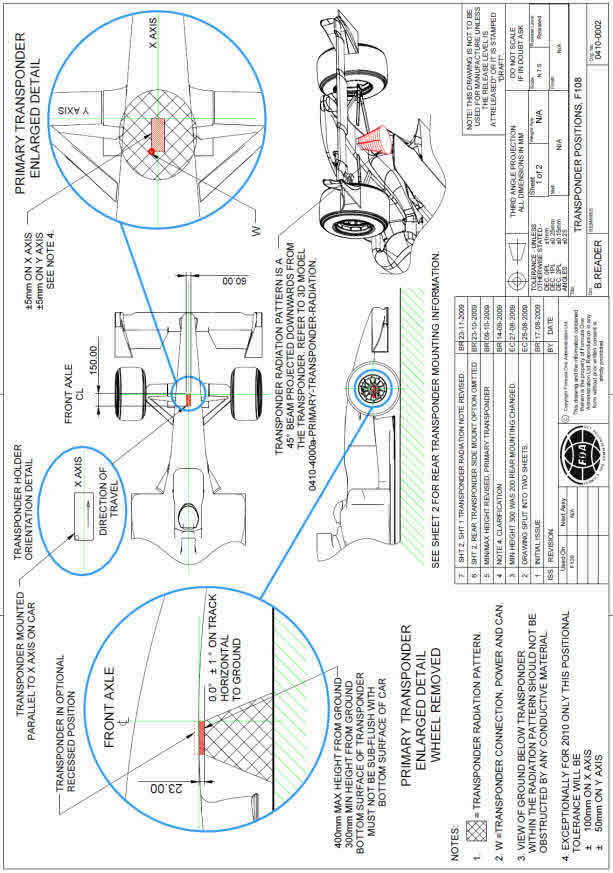
Although the FIA already has several avenues for obtaining information in the wake of an accident, motorsport's governing body has put forward a new rule for the 2016 season which would see all cars fitted with a high speed camera.
The confirmation of this proposal, which has still to be ratified by the FIA's World Motor Sport Council, comes in the wake of Fernando Alonso's crash at the Barcelona circuit during preseason testing 2015. The idea has already been backed by F1 teams and chiefs, who voted it through at an F1 Commission meeting that took place a few days before Alonso's crash.
Should the rule be ratified, revised Article 27.2 of the Sporting Regulations will be updated to:
"For the purpose of accident analysis, each car must be fitted with a high speed camera which has been manufactured by the FIA designated supplier to a specification determined by the FIA.
"This should be fitted to the car during each event and all tests which are attended by more than one team, teams must use their best endeavours to ensure that it is in working order at all times.
"The camera must be fitted in accordance with the instructions of the FIA."
Back to the top of the page






